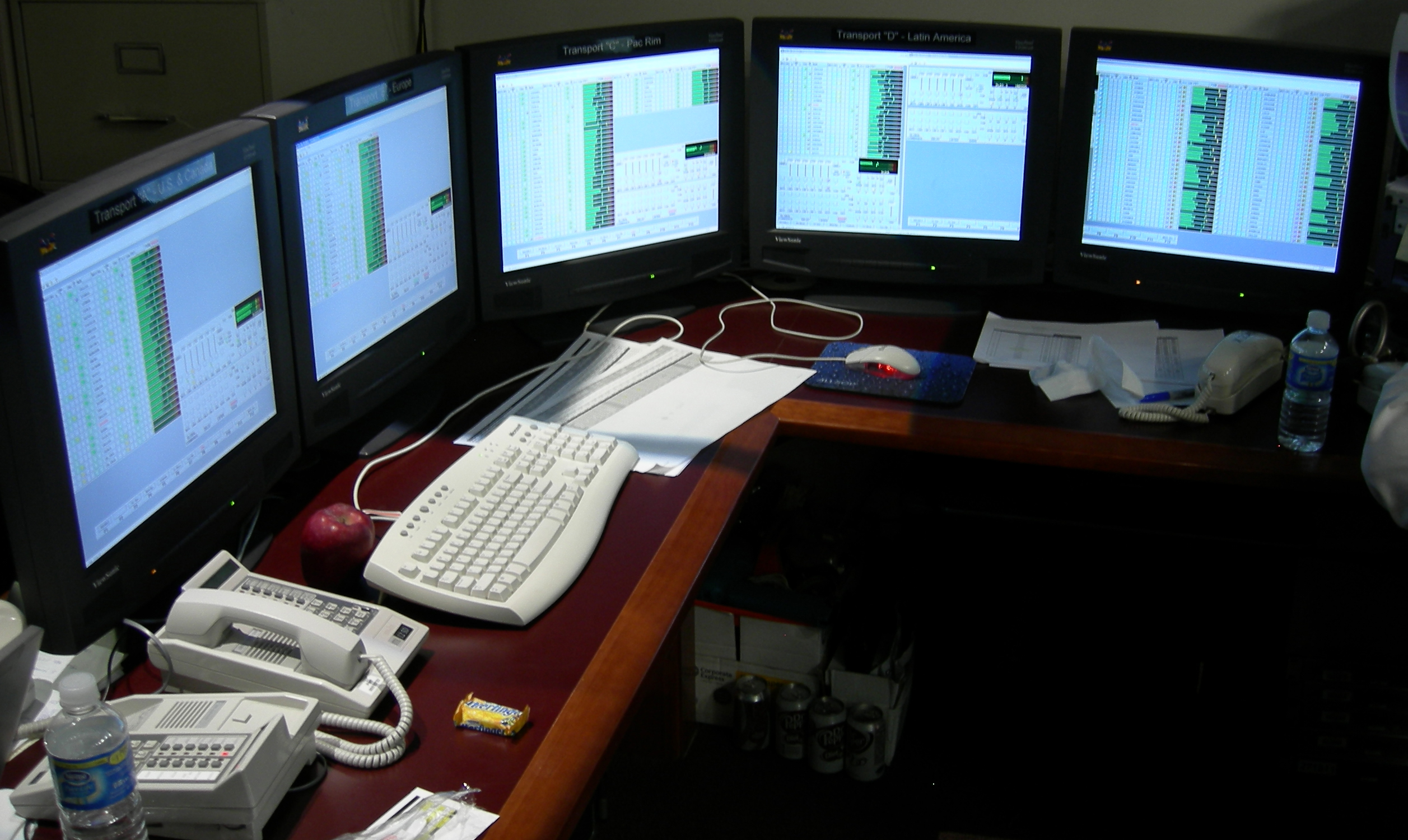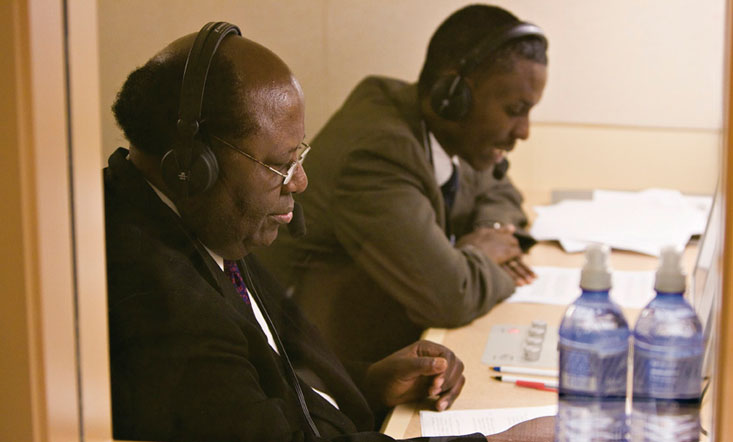The October 2011 general conference of The Church of Jesus Christ of Latter-day Saints (Mormon) will be interpreted into 93 languages — a stark contrast to the early 1960s, when conferences were interpreted in four languages on a dirt floor in the Tabernacle.
The Church’s wide-ranging interpretation effort — which celebrates 50 years of general conference interpretation this fall — is made possible in large part by cutting-edge technologies. Below is a brief look at the technologies that have allowed Latter-day Saints across the world to hear conference addresses in their own language during the past 50 years.
Early days: Shortwave radio, transoceanic cables, satellites
General conference addresses were first interpreted into foreign languages (German, Dutch, Samoan and Spanish) in 1961. Interpreters were housed in booths in the Tabernacle basement, while those who received the interpretation sat inside the Tabernacle listening through headphones.
| Temple Square is always beautiful in the springtime. Gardeners work to prepare the ground for General Conference. © 2012 Intellectual Reserve, Inc. All rights reserved. | 1 / 2 |
General conference was first beamed to Europe, South America, Central America and South Africa via WNYW’s (Radio New York Worldwide) powerful transmitters in the early 1960s. Transoceanic cables also carried conference messages under the sea in English, German, Dutch and Danish to language groups in 60 meetinghouses in the British Isles, Germany, Austria, Holland and Denmark. Films of conference sessions were also produced in 10 languages for use in 36 countries.
By 1972, 125 radio and 235 television stations carried portions of conference proceedings through direct broadcast and telecast, satellite, relay, telephone circuitry, shortwave radio, oceanic cable, video tape, audio tape and closed circuit transmission.
Conference sessions were broadcast live via satellite in Spanish and French in the early 1980s. In 1989, general conference sessions were broadcast live in 12 languages to North America, the Dominican Republic and Hawaii, while Latter-day Saints at three sites in Europe and Central America viewed the sessions. Test transmissions were also broadcast via the Pan Am satellite to stations in Manchester, England; Frankfurt, West Germany; and San Jose, Costa Rica.
1990s: Automatic audio mixers and the Internet
With the Church growing rapidly, the need arose for an automated system that could handle the broadcast of general conference in many languages. In 1992, Dave Bytheway of dlb Research built the automatic microphone mixer (ATM-1000), an analog system that required four years to build. The ATM-1000 was housed in the Tabernacle and used until 2002.
In 1999, the Church asked Bytheway to build a digital system (now known as the ATM-2000 and the On-Air Controller [OAC] 2000) for the Conference Center. Both the ATM-2000 OAC-2000 are currently used in the Conference Center.
Bytheway, who was not a Church employee, built the digital systems in his home over another four-year period with five engineers.

“All of us worked outside of our full-time jobs,” Bytheway said. “My basement and kitchen were used to build a lot of the equipment. This was all done weekends and evenings, and we did it because there was no commercially available device that could do the job. As far as I know, there still isn’t. We custom designed it because the Church needed a particular way of handling language needs.”
The ATM-2000 automatically adjusts the microphone volume of each interpreter, fades the live program up and down for the musical numbers and provides an intercom to each interpreter’s booth. The system automates the creation of each language feed and eliminates the need for manual microphone adjustments. With this system, one operator can handle a full broadcast, replacing the dozens of operators that were previously required. The OAC-2000 switches and conditions the language feeds to the Church satellite system and the Internet.




And, taking advantage of a landmark technology, the October 1999 general conference was the first to have live audio and video broadcasts on the Internet. Audio archives of that conference were made available in several languages. The Church continues to broadcast general conferences live on LDS.org in many languages.
2000: Conference Center and remote interpretation
Since the 2000 completion of the Conference Center, general conference broadcasts have used the structure’s state-of-the-art interpretation capabilities. When interpretation is required for any broadcast, the Conference Center’s production rooms can route English audio streams from the auditorium, broadcast studio or remote location to any one of 58 interpretation booths. Thanks to Bytheway’s system, microphones capture an interpreter’s voice and send it to the production room, where it is added to the main video broadcast.
Today, the Church is able to simultaneously interpret in more than 100 languages live by using interpreters located in different countries. In this remote interpretation, made possible by a system from Tieline, an interpreter receives the English audio stream from general conference in his or her own country over a telephone, ISDN line or Internet connection. The interpreted audio stream returns on the same line to the Conference Center, where it is mixed with the live audio, music, and video and sent to countries via satellite with only a few seconds' delay in the interpreter's voice. Remote interpretation is used to capture some countries’ distinct dialects. Thirty-one languages during the October 2011 general conference will be remotely interpreted using the Tieline system.
“Fifty years ago we were interpreting from dirt floors in the Tabernacle, and now we are interpreting for a single event from essentially anywhere in the world,” said Brad Lindsay, the Church’s manager of interpretation services. “This is a huge change, and technology makes this all possible.”
